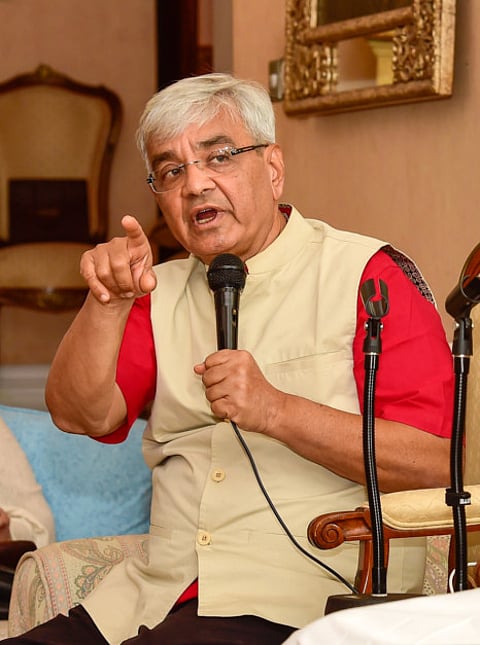Architect reconstructs his days in 70s Sharjah
Ashok Mody designed several landmark buildings in Sharjah including Al Zahra Hospital

Sharjah: In the 1970s, when the emirate of Sharjah was leading the development drive of the UAE, with new roads, flyovers, government buildings, schools, mosques and hospitals, one architect was at the centre of several of these projects.
Indian architect Ashok Mody arrived in the UAE when his Mumbai-based firm, Karani and Sanghoi Associates, bagged a contract to design Al Zahra Hospital (originally designed as a hotel, it was transformed into a hospital midway into construction) in March 1975 and soon he found himself designing several other major projects in Sharjah.
However, after five years in the emirate, Mody went back to Mumbai to continue his work back home.
Back in the UAE, almost 40 years after he left in January 1980, Mody shared his memories of the 70s in Sharjah during his presentation on Friday for Barjeel Art Foundation.
The presentation was part of the foundation’s initiative in bringing out a book spearheaded by Shaikh Sultan Souud Al Qassemi, chronicling the architectural journey of Sharjah during the 1970s.
“Sharjah, back in those days, was a small town and offered a laid-back life. There were few people and very little traffic, but it was developing very fast and there was construction activities going on everywhere, and that drive for development is what brought me to the emirate,” said Mody, speaking to Gulf News following his presentation at Shaikh Saood’s sprawling villa, one of the several he designed.
Reminiscing his days in the 70s, he said unlike now, travelling between Dubai and Sharjah in those days was a breeze.
“Every morning before breakfast I used to go to Dubai to buy bread, because I loved the bread made at Dubai Bakery which was located near the Clock Tower. I would share the taxi with other riders for just one dirham per head. Another memory that stands out is crossing the creek on the Abra and eating out at a handful of Indian and Pakistani restaurants in Bur Dubai,” he added, walking down memory lane.
At the helm of Architectural Consultants, a firm he set up in partnership with Abdul Rahman Bukhatir, the Mumbai-based architect designed some landmark projects in different parts of Sharjah.
“We started building Al Zahra Hotel in 1975 and in 1978, when he had almost finished the building, the owner asked us to redesign it into a hospital, because he realised at that time Sharjah needed [a] hospital more than a hotel. In between we also got a request for a cinema and hence built the Concord Cinema which was part of the same building,” said the 70-year-old, talking about some of his earliest projects.
One of the biggest challenges faced by Mody during his short tenure in Sharjah was helping build 1,000 villas in a span of 12 months.
“We got a contract from Sharjah Ruler His Highness Dr. Shaikh Sultan Bin Mohammad Al Qassimi, to build a thousand villas in one year. He wanted to make Shajrah an educational hub by building schools and universities and these villas were for all the teachers and other staff. We accepted the challenge and completed the project in the allotted time without compromising on the quality of buildings,” added Mody, talking about the then biggest local housing project.
As one of the earliest Indian architects in Sharjah, Mody’s buildings in the emirate between 1975 and 1979 still stand as landmarks in the emirate, including the Oceanic Hotel (erstwhile Holiday Inn) in Khorfakkan as well as the redevelopment of Dibba Al Hosn.
Still a practising architect in Mumbai, Mody has now reinvented himself as a painter. His work has been exhibited several times at art galleries in Mumbai, Dubai and Tokyo.
Sign up for the Daily Briefing
Get the latest news and updates straight to your inbox



